InterviewSolution
This section includes InterviewSolutions, each offering curated multiple-choice questions to sharpen your knowledge and support exam preparation. Choose a topic below to get started.
| 2351. |
Current Ratio is : |
|
Answer» SOLVENCY Ratio |
|
| 2352. |
(Current Investments). List five items that are included under Current Investments. |
|
Answer» (ii) Investment In Government or Trust Sccurities, (iii) Investment in DEBENTURES or BONDS, and (IV) Investment in MUTUAL Funds. |
|
| 2353. |
Current Assets Rs. 5,00,000, Current Liabilities Rs. 1,00,000, Revenue from Operations Rs. 28,00,000. Working Capital turnover Ratio will be: |
| Answer» Answer :A | |
| 2354. |
Current Assets Rs. 4,00,000, Current Liabilities Rs. 2,00,000 and Inventory is Rs. 50,000. Liquid Ratio will be: |
|
Answer» `2:1` |
|
| 2355. |
Current Assets Rs. 85,000, Inventory Rs. 22,000, Prepaid Expenses Rs. 3,000. Then liquid assets will be: |
|
Answer» RS. 63,000 |
|
| 2356. |
Current assets of a company are Rs. 5,00,000. Current ratiois 2.5:1 and Liquid ratio is 1:1. Calculate the value of current liabilities, liquid assets and inventories. |
| Answer» | |
| 2357. |
Current Assets of a Company were Rs. 1,00,000 and its current ratio was 2:1. After this the company paid Rs. 25,000 to a trade payable. The current ratio after the payment will be: |
|
Answer» `5:1` |
|
| 2358. |
Current Accounts of the Partners should be opened when the capitals are _____________. (ii) in the absence of an agreement, interest on partner 's loan shall be paid @ __________. (iii) In the absence of an agreement , partners shall _________ salaries.(iv)When there is no agreement among the partners, the profit or loss of the firm will be shared___________ by the partners.(v) __________ is an extension of Profit and Loss Account . (vi) Minimum number of persons required to start partnership business is__________ (vii) Number of partnerswhich should not exceed for partnership business is ____________. (viii) Salary or Commission to a partner is an ______________ out of profit. |
|
Answer» |
|
| 2359. |
Current assets include only those assets which are expected to be realised within ………… |
| Answer» Answer :C | |
| 2360. |
Current Assets are Rs.4,00,000, Inventories Rs. 2,00,000 , Working Capital Rs.2,40,000 Calculate Current Ratio |
| Answer» SOLUTION :`1:1` | |
| 2361. |
Current Assets do not include: |
|
Answer» PREPAID EXPENSES |
|
| 2362. |
Current Assets are Rs 4,00,000, Inventories Rs 2,00,000, Working Capital Rs 2,40,000, Calculate Current Ratio |
|
Answer» `2.5 : 1` |
|
| 2363. |
Current Accounts of partners are maintaned if |
|
Answer» CAPITALS are FIXED |
|
| 2364. |
Current Accounts of partners are maintained if |
|
Answer» CAPITALS are FIXED. |
|
| 2365. |
CurrentAccountof apartner |
|
Answer» willalwayshavea CREDIT BALANCE . |
|
| 2366. |
Cross Roads Ltd. has to redeem 50,000, 8% Debentures of Rs 100 each on 30th June, 2019. It should have a balance of Rs 12,50,000 in Debenture Redemption Reserve. It decides to set aside amount to Debenture Redemption Reserve on 31st March, 2019 on which date it has following reserves: {:(,Rs,),("Capital Reserve","6,00,000",),("Dividend Equalisation Reserve","2,50,000",),("General Reserve","1,00,000",),("Surplus, i.e., Balance in Statement of Profit and Loss","3,00,000",):} How much further amount it needs to set aside to Debenture Redemption Reserve how much it can set aside out of the above reserves and surplus ? |
|
Answer» RS 12,50,000 and Rs 6,50,000 |
|
| 2367. |
Cross Roads Ltd. Has to redeem 50,000 , 8% Debentures of Rs.100 eachon 30 th june , 2019, It should have a balance of Rs.12,50,000 in Debenture Redemption Reserve , It decides to set aside amount to Debenture Redemption Reserve on 31 st March , 2019 on which date it has following reserve:{:(, "Rs."),("Capital Reserve","6,00,000"),("Debenture Redemption Reserve","2,50,000"),("General Reserve","1,00,000"),("Surplus, i.e, Balance in Statement of Profit and Loss","3,00,000"):}How much further amount it needs to set aside to Debenture Redemption Reserve and how much it can set aside out of the above reserves and surplus? |
|
Answer» Rs.12,50, 000 and Rs.6,50,000 |
|
| 2368. |
Credit side balance in Income & Expenditure Account reveals : |
|
Answer» (a) EXCESS of cash receipts over payments |
|
| 2369. |
Credit revenue from operations Rs. 3,00,000. Trade ReceivablesTournover Ratio 5, Calculate Closing Debtors, if closing debtors are two times in comparison to Opening Debtors. |
|
Answer» RS. 40,000 |
|
| 2370. |
Credit revenue from operationsRs. 6,00,000, Cash revenue from operations Rs. 1,50,000, Debtors Rs. 1,00,000, B/R Rs. 50,000. Average Collection Period will be : |
|
Answer» 2 MONTHS |
|
| 2371. |
Credit revenue from operations Rs. 5,60,000, Debtors Rs. 70,000, B/R Rs. 10,000. Average Collection Period will be : |
|
Answer» 52 Days |
|
| 2372. |
Credit revenue from operations Rs. 24,00,000, Trade Receivables Turnover Ratio 6 times, Opening Debtors Rs. 3,20,000. Closing Debtors will be: |
|
Answer» RS. 4,00,000 |
|
| 2373. |
Credit Purchases Rs. 6,00,000, Trade Payables Turnover Ratio 5, Calculate closing creditors, if closing creditors are Rs. 10,000 less than opening creditors. |
|
Answer» RS. 1,15,000 |
|
| 2374. |
Credit Purchases Rs. 12,00,000, Opening Creditors Rs. 2,00,000, Closing Creditors Rs. 1,00,000. Trade Payables Turnover Ratio will be : |
|
Answer» 6 TIMES |
|
| 2375. |
Credit purchase of stationery is Rs 64,000, which is 80% of total purchase, compute cash purchase of stationery |
|
Answer» RS 16,000 |
|
| 2376. |
Credit purchase of stationery is Rs. 64,000, which is 80% of total purchase, compute cash purchase of stationey . |
|
Answer» RS. 16,000 |
|
| 2377. |
Credit Purchase Rs. 9,60,000, Cash Purchases Rs. 6,40,000, Creditors Rs. 2,40,000, Bills Payable Rs. 80,000. Average Payment Period will be: |
|
Answer» 3 MONTHS |
|
| 2378. |
Cost of revenue from operations Rs. 6,00,000, Inventory Turnover Ratio 5, Find out the value of opening inventory, if opening inventory is Rs. 8,000 less than the closing inventory. |
|
Answer» RS. 1,12,000 |
|
| 2379. |
Court can order a firm to be dissolved when a partner becomes insane. |
|
Answer» |
|
| 2380. |
Courtcanmakean ordertodissolvethefirmwhen : |
|
Answer» Some partnerhasbecomefullymad |
|
| 2381. |
Cost of Revenue from Operations = |
|
Answer» Revenue from OPERATIONS - Net Profit |
|
| 2382. |
Convert the following statement of profit and loss into the comparative statement of profit and loss of BCR Co .Ltd: |
Answer» Solution :COMPARATIVE STATEMENT of profit and LOSS for the year ended March 31,2016 and 2017: 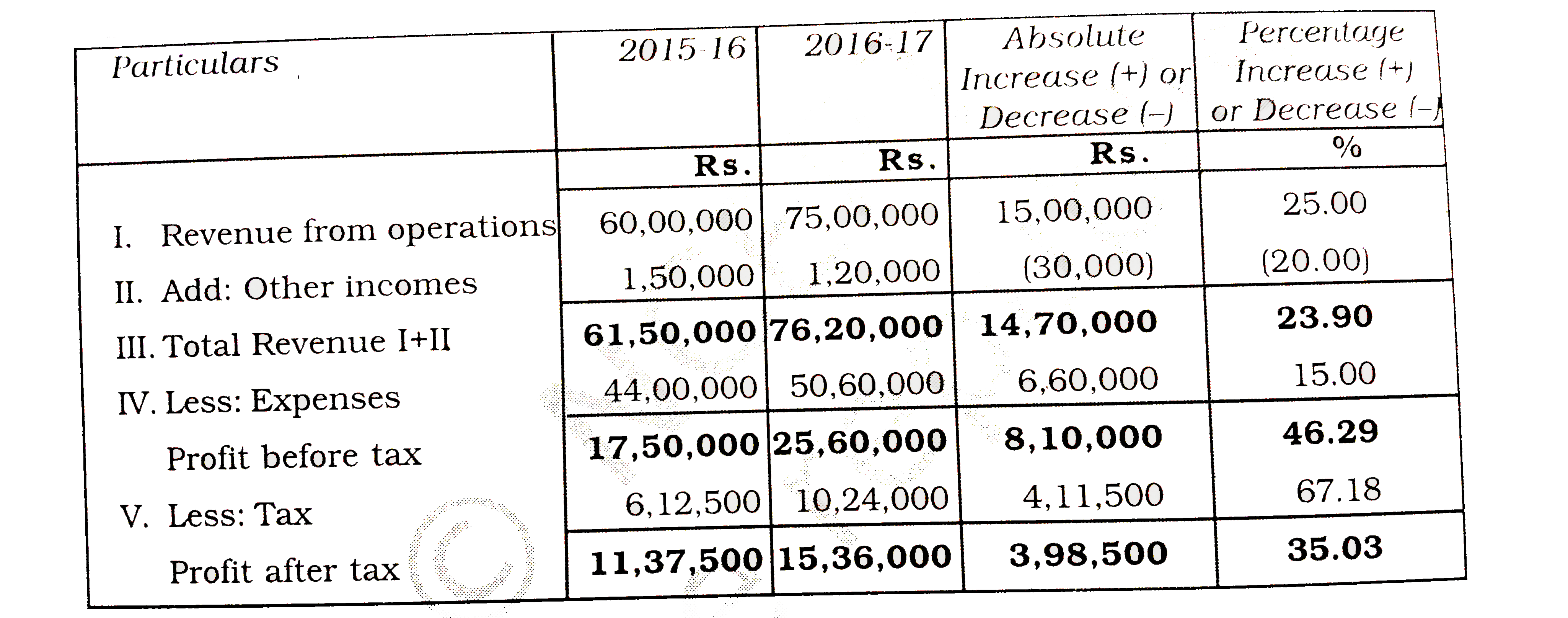
|
|
| 2383. |
Compute the value of goodwill on the basis of four years purchase of the average profits based on the last five years? The profits for the last five years were as follows:{:(,Rs.),(2013,40000),(2014,50000),(2015,60000),(2016,50000),(2017,60000):} |
|
Answer» |
|
| 2384. |
Compute Cost of Materials Consumed from the following: Opening Inventory of Materials Rs 2,50,000, Materials Purchased Rs 20,00,000, and Closing Inventory of Materials Rs 3,00,000. |
|
Answer» - Closing Inventory of Materials = RS 2,50,000 + Rs 20,00,000- Rs 3,00,000= Rs 19,50,000. |
|
| 2385. |
Compute Cost of Materials Consumed from the following: Opening Inventory of Materials Rs 1,50,000, OpeningWork-in-Progress Rs 2,00,000, Materials Purchased Rs 15,00,000, Closing Inventory of Materials Rs 2,50,000 and Closing Inventory of Wrok-in-Progress Rs 1,50,000. |
|
Answer» - CLOSING Inventory of Materials = Rs 1,50,000 + 15,00,000 - Rs 2,50,000 = Rs 14,00,000. Opening Inventory of Work-in PROGRESS, i.e., Rs 2,00,000 and Closing inventory of Work-in-Progress, i.e., Rs 1,50,000 will not be considered to compute Cost of Materials Consumed as these are considered to calculate Changes in Inventories of Finished Goods, Work-in-Progress and Stock-in-Trade. |
|
| 2386. |
Compute cost of Materials Consumed from the following: Opening Inventory of Materials Rs 7,50,000, Opening Inventory of Stock-in-Trade Rs 2,00,000, Meterials Purchased Rs 25,00,000, Purchases of Stock-in-Trade Rs 15,00,000, Closing Inventory of Meterials Rs 2,50,000 and Closing Inventory of Stock-in-Trade Rs 1,50,000. |
|
Answer» -CLOSING Inventory of Materials = Rs 7,50,000 + Rs 25,00,000 - Rs 2,50,000 = Rs 30,00,000. Opening Inventory of Stock-in-Trade, i.e., Rs 2,00,000, Purchases of Stock-in-Trade, i.e., Rs 15,00,000 and Closing Inventory of Stock-in-Trade, i.e., Rs 1,50,000 will not be CONSIDERED as these are not part of Cost of Materials Consumed. |
|
| 2387. |
{:("Compute Cost of Materials Consumed from the following:", ₹),("Opening Inventory : Materials","5,50,000"),(": Finished Goods","2,50,000"),("Materials Purchased :","22,50,000"),("Closing Inventory : Materials","4,50,000"),(":Finished Goods","1,50,000"):} |
|
Answer» Materials - CLOSING Inventory of Materials = RS 5,50,000 + Rs 22,50,000- Rs 4,50,000 = Rs 23,50,000. Note: Opening Inventory of Finished Goods, i.e., Rs 2,50,000 and Closing Inventory of Finished Goods, i.e., Rs 1,50,000 will not be considered to COMPUTE Cost of Materials Consumed as these are considered to calculate Changes in Inventories of Finished Goods, Work-in-Progress and Stock-in-Trade. |
|
| 2388. |
Complete the missing (?) figures in the following Extract of Balance Sheet: |
Answer» SOLUTION :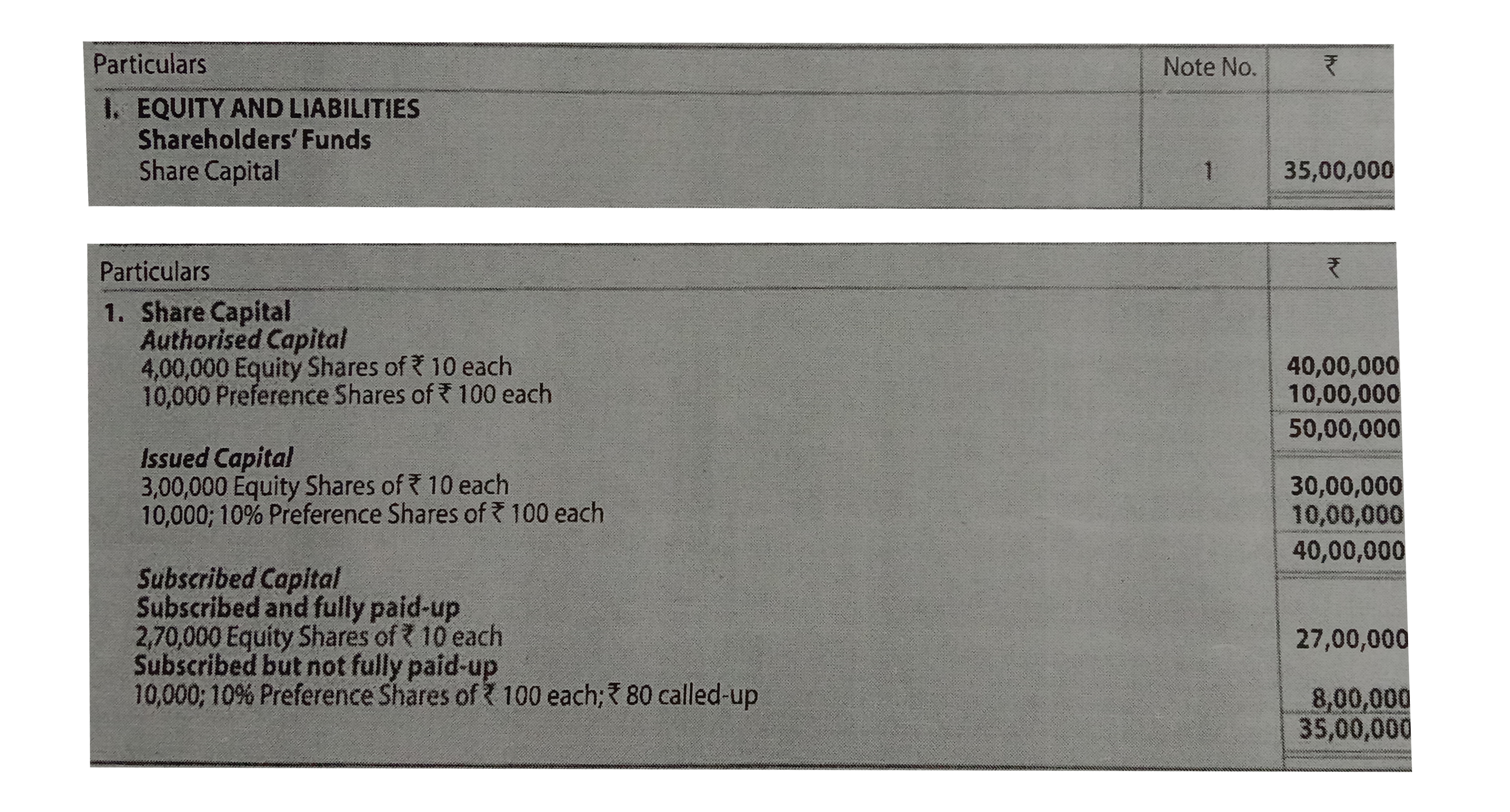
|
|
| 2389. |
Complete the missing amounts in the following accounts: |
Answer» Solution : Notes: (1) Calculation of Missing Values of REVALUATION Account: They have been taken from the given Balance Shet of Reconstituted firm. For EXAMPLE: DECREASE in value of MachineryRs 40,000 is taken for MACHINERY. (2) Calculation of Opening Balances of X's Capital and Y's Capital: Following steps have been taken: Step 2. Put the value of Revaluation from Revaluation Account. Step 3. The amount ofRs 9,00,000 andRs 3,50,000 represent the Opening Balances of their Capitals, calculated as Balancing Figure. 3. Value of Bills Payable is calculated by taking the following steps: Step 1. Take the figure of Provision for Doubtful Debts from Revaluation Account and deduct it from debtors on the Balance SHEET, then we get Net debtors. Step 2. Find out total of Assets side of the Balance Sheet and put it as the total of Liabilities side. Step 3. Calculate the figure of Bills Payable as the Balancing Figure. |
|
| 2390. |
Complete the following Journal entries: |
Answer» Solution :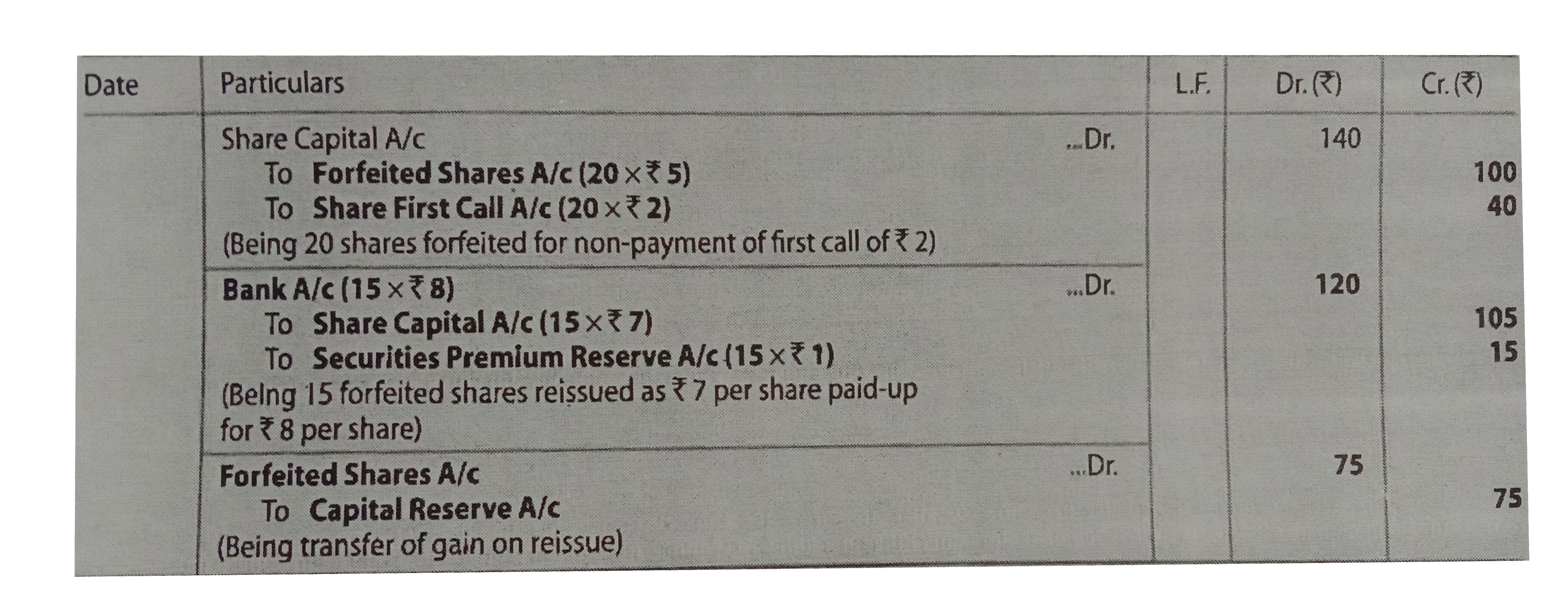 Working Note: GAIN on 15 reissued shares = Rs. 100/20 `XX` = Rs. 75. |
|
| 2391. |
Complete the following Journal entries: |
Answer» SOLUTION :
|
|
| 2392. |
Complete the following Journal entries: |
Answer» SOLUTION :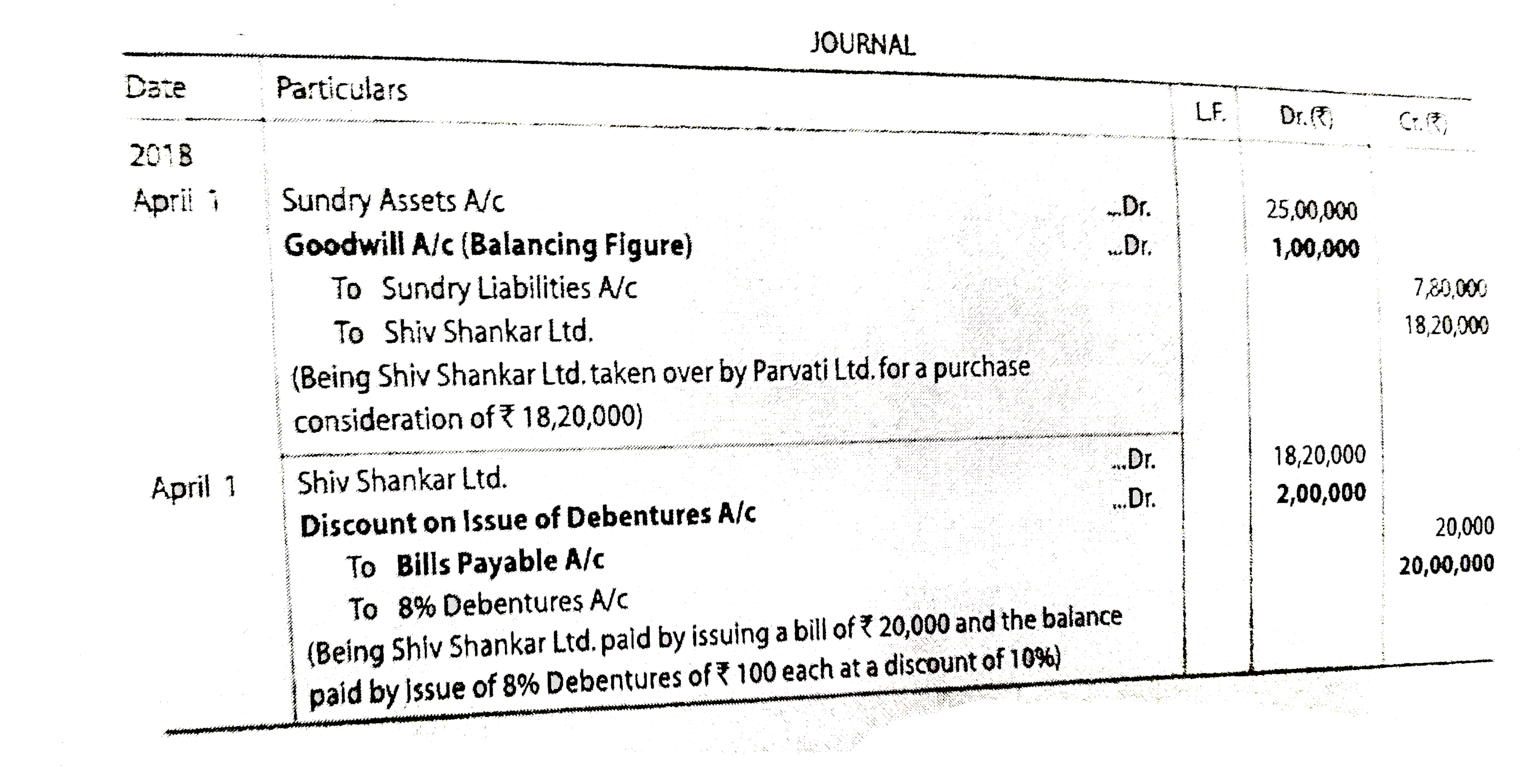 No of DEBENTURES ISSUED `= ₹ 18,00,000 //₹ 90` `=20,000.` |
|
| 2393. |
Complete the following entries in the Journal: |
Answer» Solution :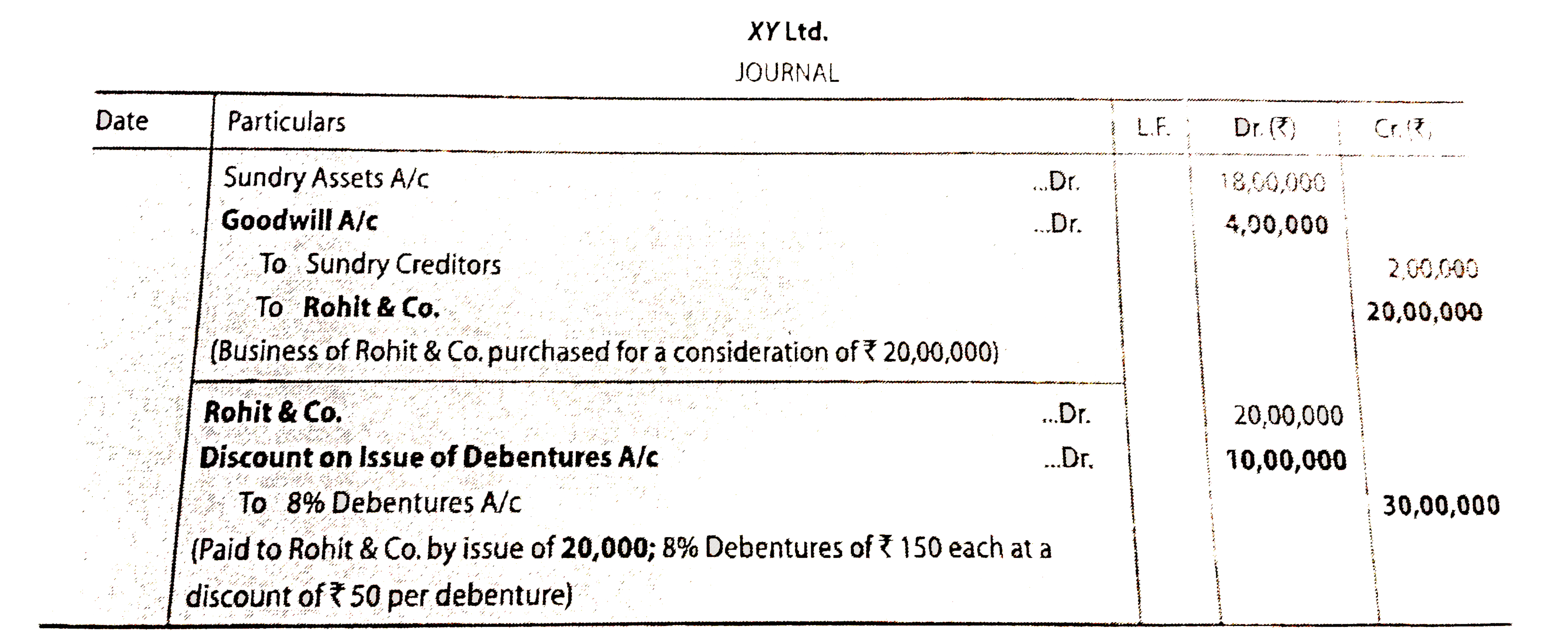 NOTE: Number of Debenturesto be issued = RS 20,00,000/Rs. 100 = 20,000 DEBENTURES. |
|
| 2394. |
Complete the following Accounts and Balance Sheet by filling the missing amounts: |
Answer» SOLUTION :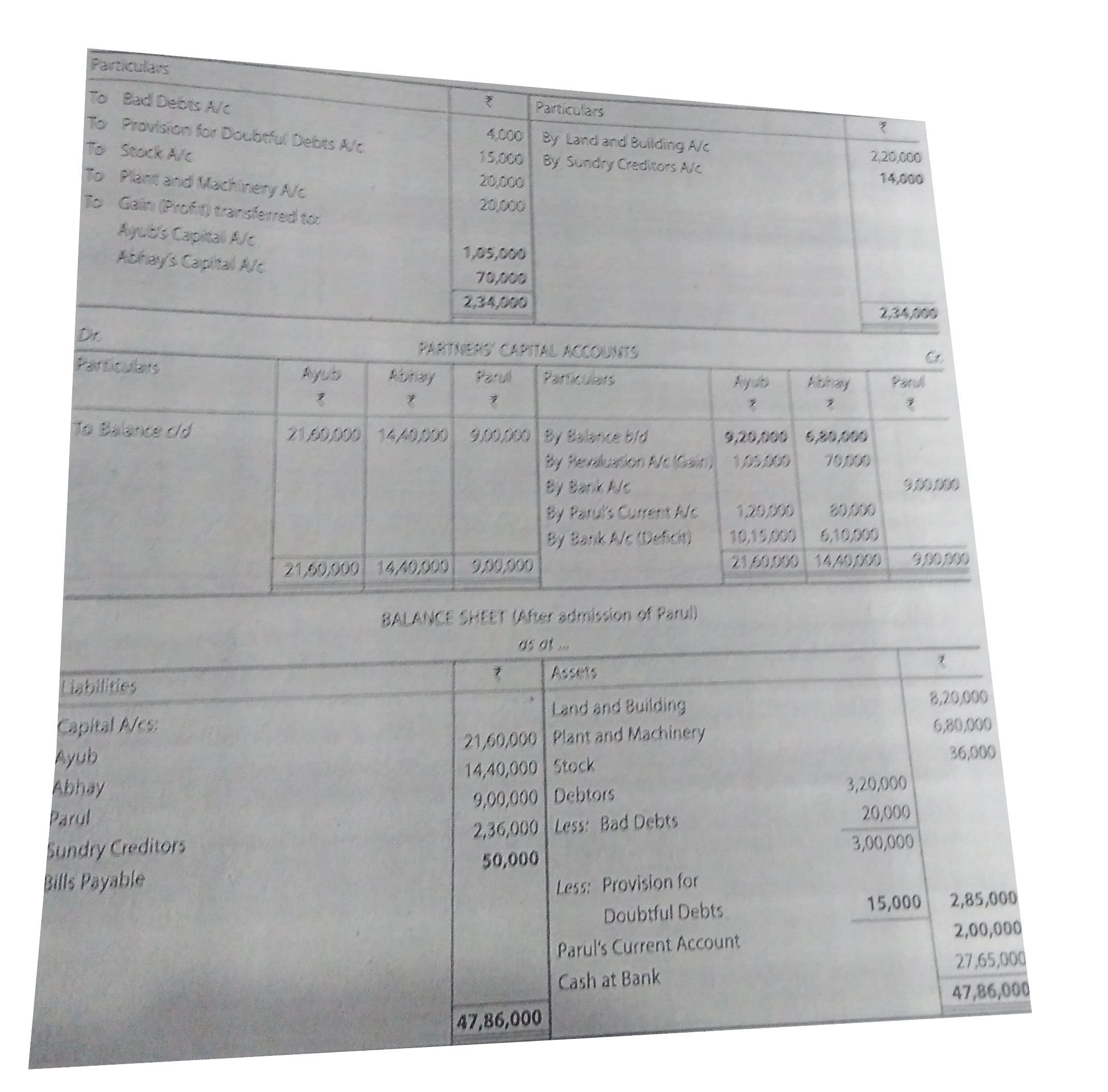
|
|
| 2395. |
Comparison of actual values of one period with those of another period for the same firm is |
|
Answer» INTER- FIRM COMPARISON. |
|
| 2396. |
Comparison with the help of ratios is not possible if different firms follow different Accounting Policies. Comment. |
| Answer» Solution :If different FIRMS follow different ACCOUNTING policies, such as valuation of stock, CHARGING of depreciation, ETC., then inter-firm comparison becomes irrelevant because the principles of accounting FOLLOWED are different. | |
| 2397. |
Comparison of actual values of one firm with those another firm belonging to the same industry is |
|
Answer» INTER- FIRM COMPARISON. |
|
| 2399. |
Comparative statement of profit and loss for the years ended 31st march 2018 and 2019 From the above comparative statement of profit and loss for the year ended 31st march 2018 and 31st march 2019 compute gorss profit ratio. |
Answer» SOLUTION :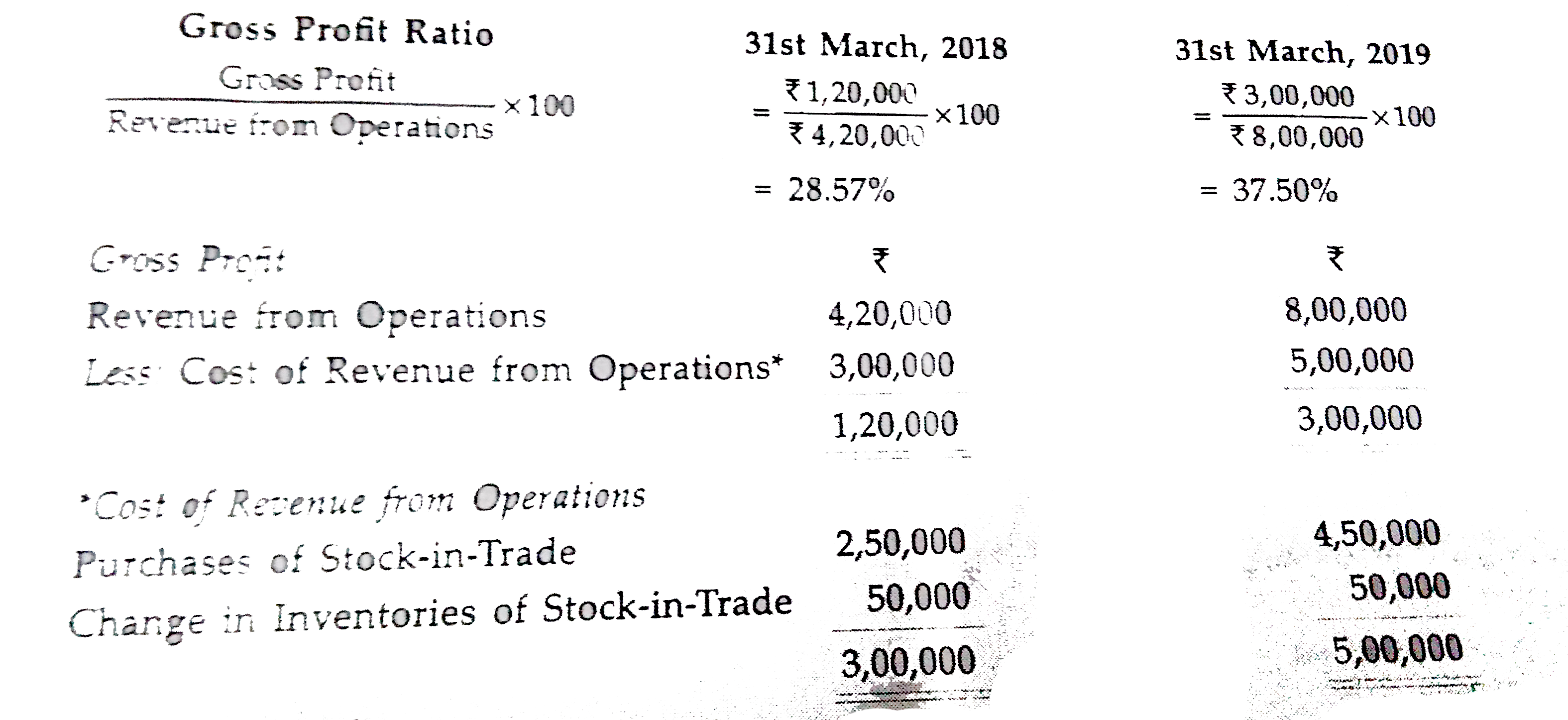
|
|
| 2400. |
Comparative statements are also known as: |
|
Answer» DYNAMIC analysis |
|